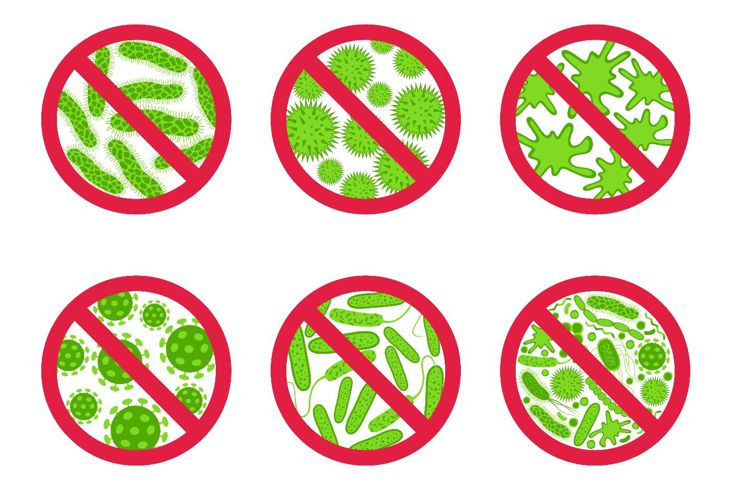Pau D’arco has been used in traditional medicine for hundreds of years, by the Indio tribes of South America, and even the ancient Incas and Aztecs. This tea comes from the inner bark of a tree, of the Tabebuia Avellanedae or Tabebuia Impetiginosa. Pau D’arco grows in South America, the Dominican Republic, Haiti, Cuba and well north into Mexico. The tree is sometimes known as “trumpet tree” due to its thin trumpet-shaped flowers. While the tree looks beautiful, it’s also revered by herbalists for the healing properties of the tea that comes from its inner bark.
What Does The Tea Taste Like?
Pau D’arco Tea tastes slightly bitter, with a woody tannic flavor. It has an earthy taste to it, with a slight fruit taste. You can add lemon juice, milk or honey to your tea to improve on the flavor if the taste does not suit you. If you add a little stevia leaf extract the slightly bitter taste will no longer be an issue. The tea comes in either tea bag form or raw tea, which requires a tea ball. As far as medicinal teas go, it has a somewhat mellow flavor.
Antiviral Properties
One of the most known qualities of Pau D’arco is its antiviral qualities. The bark has a compound has virus inhibiting qualities to it. It can kill or stunt some viruses. The bark also contains quercetin, a potent antiviral compound. Lapachol has been proven to help combat malaria, influenza and other diseases.
Pau D’arco and Healthy Liver Function
It is thought that this bark can help to promote healthy liver function by neutralizing poisons present in the liver. Hospitals in South America use Pau D’arco on chemotherapy to help their patients reduce the destructive harm done by chemotherapy to the liver and the kidneys. In one clinical study, it helped to mitigate jaundice in people with liver disease.
Candida Treatment
The bark has antifungal properties to it. Pau d’Arco has long been known to help fight candida, which is a fungal yeast infection. In fact, the antifungal properties of Pau d’Arco are one of the most studied medicinal properties of this bark. The naphthoquinones present in this bark can kill fungi. The most potent naphthoquinones present in this bark are lapachol, and beta-lapachone, which lab tests have confirmed can kill many types of fungi.
Fights Cancer Growth
Several studies have linked this amazing bark and tea to fighting cells. Breast cancer cells reduce by inhibiting estrogen receptor modulators in one study. Beta-lapachone, one compound present in this bark increased the cytotoxicity against prostate cancer cells, which helped to kill the cancer cells in another study. Another study found that Beta-lapachone, a compound present in Pau D’Arco, helped reduce tumor formation in heart cancer.
May Help Fight Obesity
In studies done on mice Taheebo, the other name for Pau D’arco helped to fight obesity in several ways. The bark lowered the levels of cholesterol present in the mice. It also helps to reduce insulin and leptin levels and was also shown to increase fat metabolism. It was especially effective in mice who had estrogen deficiency-induced obesity. Tabebuia extract can reduce levels of triglycerides in the human body, which also helps to fight against excess weight.
Anti-inflammatory Properties
This amazing bark and tea have shown promise in relieving the pain associated with arthritis, rheumatism, and fibromyalgia in many patients. More studies are needed to prove this benefit in humans, but many users of this tea swear to its effects. In mice and other animals, just 200 mg of Pau D’arco extract helped to increase the animal’s pain threshold. The extract helped to suppresses PGE(2) production, thereby reducing inflammation.
Antibacterial Agent
This bark has significant antibacterial properties. It is for example more effective against Helicobacter pylori than some over the counter medications. Lab tests on ten different strains of harmful bacteria exposed to Pau D’arco showed a significant reduction in the spread and growth of these bacteria. In addition, lab tests also showed it helped to reduce the symptoms of the highly resistant Staphylococcus aureus infection.
Antioxidant Properties
Pau D’arco is rich in Beta-lapachone, which helps to increase the activity of antioxidant enzyme genes. It does this by increasing the activity of antioxidant enzymes. The bark itself contains many antioxidants to help the body fight free radicals. The US Department of Agriculture’s Western Regional Research Center found that pau d’arco has antioxidative properties.
Pau D’arco and Aging
Research suggests Pau D’arco may have an anti-aging effect by boosting your nicotinamide adenine dinucleotide also known as NAD+. Nicotinamide adenine dinucleotide acts as a signaling molecule for stress, disease, and slowing down the aging process. The bodies levels of NAD+ decline as we age, reducing mitochondrial function. When one suffers from mitochondrial depletion, the symptoms of aging begin to show. This agent is present in the bark of the Pau D’arco, and may help people increase their NAD+ levels.

 Home
Home Health
Health Diet & Nutrition
Diet & Nutrition Living Well
Living Well More
More




















